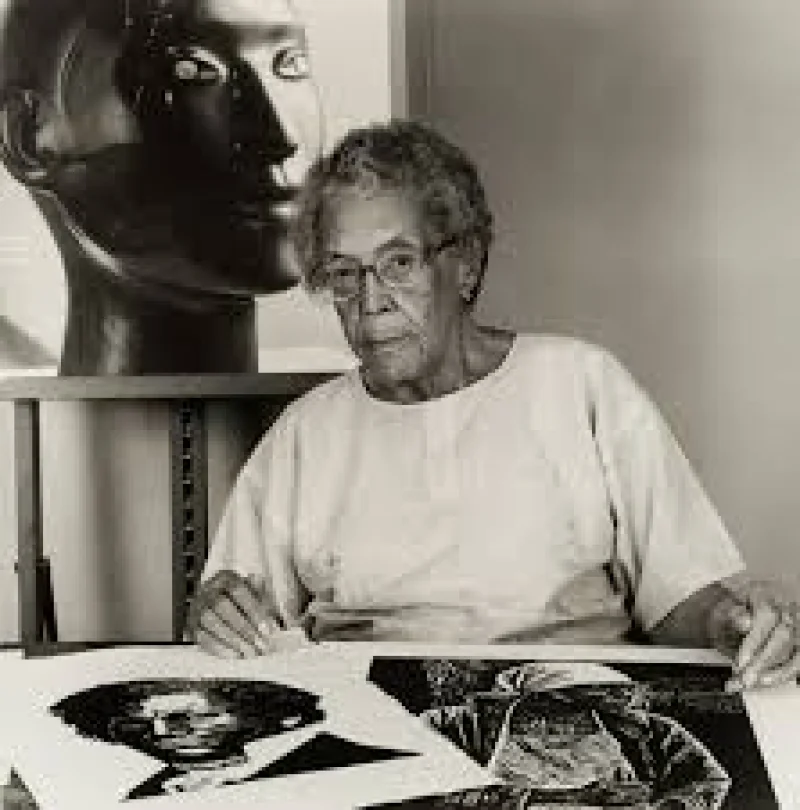Short Summary
Elizabeth Catlett was an influential African-American and Mexican sculptor and printmaker known for her powerful depictions of the African-American experience. Her work often explored themes of race, gender, and class, contributing to her reputation as a key figure in both the American and Mexican art scenes. She is particularly famous for her sculptures and prints that celebrate the strength and resilience of Black women. Throughout her career, Catlett used her art as a tool for social change, earning her a lasting legacy in the art world.
Early Life & Education
Born on April 15, 1915, in Washington, D.C., Elizabeth Catlett was the youngest of three children. Her parents, John and Mary Catlett, were both educators, which instilled in her a strong appreciation for learning and culture from an early age. Catlett attended Howard University, where she studied under prominent artists like Lois Mailou Jones and James Herring. She graduated in 1935 with a Bachelor of Science degree. She later attended the University of Iowa, where she earned a Master of Fine Arts degree in 1940. Her time at Iowa was formative, as she studied under Grant Wood, who encouraged her to focus on themes related to her heritage.
Career Highlights
Elizabeth Catlett's career was marked by her commitment to creating art that reflected her social and political beliefs. After completing her education, she taught at various institutions, including Dillard University in New Orleans. In 1946, she moved to Mexico, where she joined the Taller de Gráfica Popular, a collaborative printmaking workshop. Her experience in Mexico deeply influenced her style and subject matter. During her career, she produced numerous sculptures and prints that highlighted the struggles and triumphs of Black people, particularly women. Her work gained international recognition, and she continued to create art well into her 90s.
Major Achievements
- Received the Rosenwald Fellowship in 1946, which allowed her to study in Mexico.
- Created "Sharecropper," an iconic linoleum cut print representing the resilience of Black women.
- Became the first woman to receive an M.F.A. in sculpture from the University of Iowa.
- Exhibited her work in major institutions, including the Museum of Modern Art in New York.
- Received the National Council of Negro Women’s Living Legacy Award in 1980.
Famous Quotes
- "I have always wanted my art to service my people—to reflect us, to relate to us, to stimulate us, to make us aware of our potential."
- "Art is only important to the extent that it aids in the liberation of our people."
Interesting Facts
- Elizabeth Catlett became a Mexican citizen in 1962.
- She was married to Mexican artist Francisco Mora.
- Her grandmother was a freed slave, which influenced her focus on African-American history.
- Catlett was once arrested for her political activism in Mexico.
- She worked alongside Diego Rivera and Frida Kahlo in Mexico.
Legacy / Influence
Elizabeth Catlett's legacy is characterized by her dedication to portraying the African-American experience and advocating for social justice through art. Her work continues to inspire contemporary artists and activists who seek to address issues of race, gender, and class. Her sculptures and prints serve as enduring symbols of empowerment and resilience for marginalized communities worldwide.
FAQ
Q: Why is Elizabeth Catlett famous?
A: She is famous for her powerful sculptures and prints depicting the African-American experience and advocating for social justice.
Q: What themes did Catlett focus on in her artwork?
A: She focused on themes of race, gender, and class, particularly highlighting the struggles and triumphs of Black women.
Q: Did Elizabeth Catlett receive any significant awards?
A: Yes, she received several awards, including the National Council of Negro Women’s Living Legacy Award in 1980.











